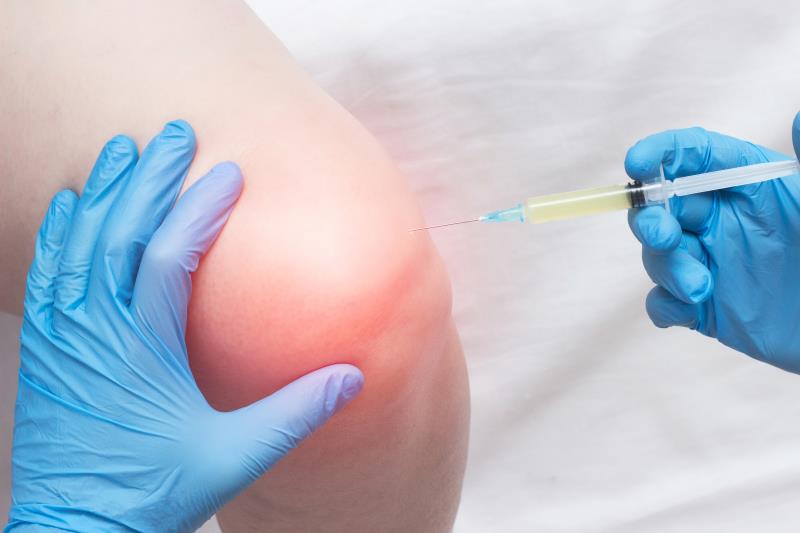Intra-articular prolotherapy a treatment alternative for knee OA?





The administration of intra-articular hypertonic dextrose prolotherapy (DPT) injections led to improvements in function, pain, and quality of life (QoL) in patients with knee osteoarthritis (OA) compared with normal saline (NS) injections, a Hong Kong study has shown.
Knee OA entails pain, disability, and substantial treatment costs. [Ann Rheum Dis 2014;73:1323-1330] Given the limitations of the currently available treatment regimens* for knee OA, the search continues for safe and effective nonsurgical remedies. [BMJ 2015;350:h1225; Lancet 2017;390:e21-e33; Ann Rheum Dis 2014;73:1442-1445]
The positive and enduring effects of DPT found in the study underline its potential as a treatment alternative for knee OA, specifically for cases refractory to conservative care, said the researchers.
“Hypertonic DPT has historically been understood to facilitate healing and subsequent pain control through tissue proliferation potentially mediated by an inflammatory mechanism,” they said. The standard protocol involves both intra- and extra-articular injections. [J Altern Complement Med 2012;18:408-414]
However, the standard protocol requires multiple injections and opioid premedication, noted the researchers. Moreover, the extra-articular protocol requires specialized training, whereas the intra-articular approach is easy to learn as it is part of conventional training, quick to perform, less painful, and inexpensive.
Therefore, the team sought to evaluate the potential of intra-articular injections alone in 76 individuals (mean age 63 years, 71 percent female) who were randomized 1:1 to 5-mL DPT or NS injections at weeks 0, 4, 8, and 16. [Ann Fam Med 2020;18:235-242]
One-year outcomes showed a positive trend favouring DPT over NS as reflected by WOMAC** pain (difference-in-difference [DID] estimate, –10.34), function (DID estimate, –9.55), and composite scores (DID estimate, –9.65; p=0.02 for all). “[These were] clinically meaningful, with the composite WOMAC score improvement in the DPT group exceeding the MCID*** of 12 points at 52 weeks,” said the researchers.
The VAS# pain intensity score (DID estimate, –10.98; p=0.04) and the EuroQol-5D (EQ5D) VAS (DID estimate, 8.64; p=0.02) and index scores (DID estimate, 0.09; p=0.04) also signified similar benefits in favour of DPT over NS.
“[T]he overall trend of improvement in the EQ5D index also exceeded its MCID of 0.07 points in patients with knee OA. EQ5D is a well-known QoL measurement with fair responsiveness of improvement. Therefore, the improved EQ5D score in the DPT group suggests a potential global effect of this knee-specific intervention,” they explained.
Eight serious adverse events were reported; however, none were associated with the interventions. Treatment adherence and satisfaction rates with DPT were high, with almost 95 percent noting that they would recommend it to others.
The researchers attributed the mechanism of action of DPT to procedural and biological factors. Other potential mechanisms include stimulation of the inflammatory cascade, a noninflammatory proliferant effect, and chondrogenesis. [J Orthop Res 2008;26:816-823; Hand 2014;9:52-57; PM&R 2016;8:1072-1082]
The study could have been limited however by the absence of a usual care arm and the exclusion of participants with morbid obesity. Exercise and weight loss, which may have an impact on the outcomes, were also not taken into context. “The treatment of only one painful knee instead of both may not reflect the overall efficacy of DPT in real-world practice,” they added.
Longer-term follow up, direct comparisons with other## intra-articular injection regimens, and analyses of cost-effectiveness and underlying mechanisms are thus warranted to ascertain the role of DPT in clinical practice, they added.